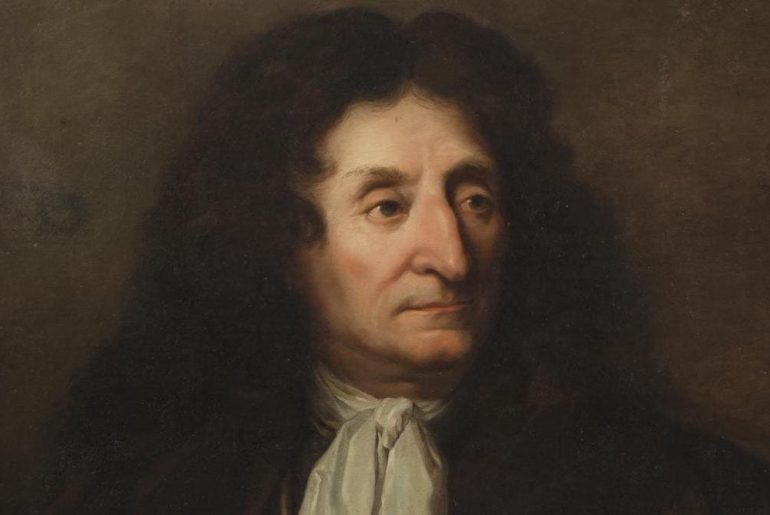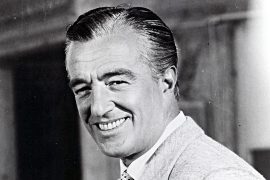Jean de La Fontaine was born in Château-Thierry in north-eastern France on July 8, 1621 and died in Paris on April 13, 1695. He was a French writer.
De la Fontaine was born the son of a bourgeois official nobleman, whose office he later inherited but did not exercise. He finished his schooling in Paris, where he had moved in 1637. After two years he dropped out of a theology degree he started, as did a two-year law degree.
In 1647 he married a girl who was only fourteen and also came from a middle-class, aristocratic family. Despite a son together, it should not have been an intimate relationship. Although de la Fontaine was admitted to the Supreme Court, not much is known of his practice.
From 1658 he appeared in public with his first literary works, including commissioned works. Ten years later the first edition of his fables, which later made him world famous, was published. Some of his other works, such as plays, were failures. In 1692 he fell seriously ill, but published a complete edition of his fables.
Jean de la Fontaine died in 1695 at the age of 73 in the home of a patron in Paris.
What is Jean de La Fontaine known for?
Jean de La Fontaine, (born July 8?, 1621, Château-Thierry, France—died April 13, 1695, Paris), poet whose Fables rank among the greatest masterpieces of French literature.
What is Jean de La Fontaine’s most famous fable?
Le Corbeau et le Renard. Le Corbeau et le Renard (= The Crow and the Fox) is one of the most famous fables. Really, every French person knows this fable, often by heart!
How did Jean de La Fontaine become famous?
In 1668 La Fontaine published six books of Fables, in verse. Dedicated to the Dauphin, these poems were extraordinarily successful, and La Fontaine’s fame was secure at last. The fables cover a vast range of human experience; formally they are remarkably varied and free.
Why did Jean de La Fontaine write about animals?
Jean de La Fontaine (born July 8, 1621 in Château-Thierry in the Aisne, and died April 13, 1695 in Paris) was a French fabulist, moralist and novelist who worked as a master of water and forests. During his tours, he observed the behavior of animals. This inspired him to write fables.
What does the name Fontaine mean?
Fontaine is a French word meaning fountain or natural spring or an area of natural springs.
How do you pronounce La Fontaine?
How many fables did Jean de la Fontaine wrote?
Jean de la Fontaine (1621-95) was the author of 12 books containing a total of 243 fables in verse, published between 1668 and 1694.
Did La Fontaine copy Aesop?
Jean de La Fontaine was a great teller of fables in France in the 17th century. He based many of his fables on those of Aesop. Gustave Doré (1832-1883) was one of the most celebrated 19th-century French illustrators.
Who did Jean de La Fontaine dedicate his books to?
In 1669, La Fontaine published Les Amours de Psyché et de Cupidon, dedicated to one of his patrons, Marie-Anne Mancini, Duchess of Bouillon.
What did Jean de La Fontaine want to become?
Then he decided to become a writer and first published l’Eunuque, in 1654, translated from Terentius’s old version, then a heroic poem, Adonis, in 1658, inspired by Ovid. The latter work allowed him to have the admiration and protection of Nicolas Fouquet.
How old was Jean de La Fontaine when he died?
73 years
1621–1695
When did Jean de La Fontaine start writing Fables?
In 1668, his first book of fables was written. His works mostly consist of fables, tales and other miscellaneous work. His fables are universally famous and his tales are known by all lovers of French literature.
Is Aesop and Jean de La Fontaine?
Some legends suggest Aesop was an ugly hunchbacked slave, although his real appearance is a mystery. One thing is known for sure – Aesop was a very smart, resourceful and inventive man. Jean de La Fontaine was a French poet and fabulist, who lived and worked during the XVII century.
Who was La Fontaine’s protector when he published his second book of Fables in 1679?
Fouquet, known for his support of the arts and of artists, soon became La Fontaine’s admirer and protector.





